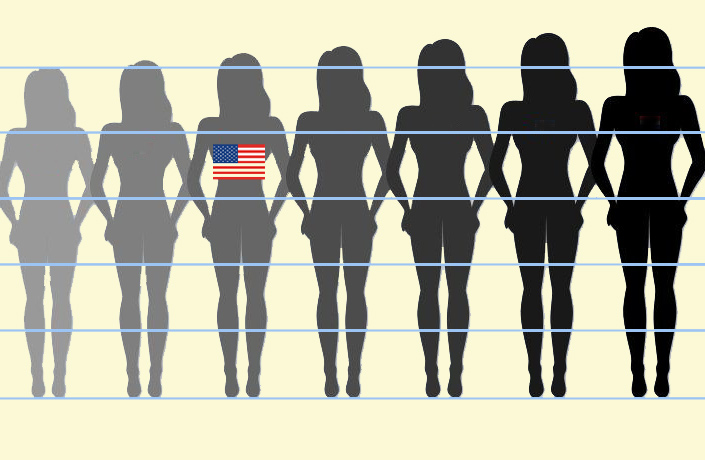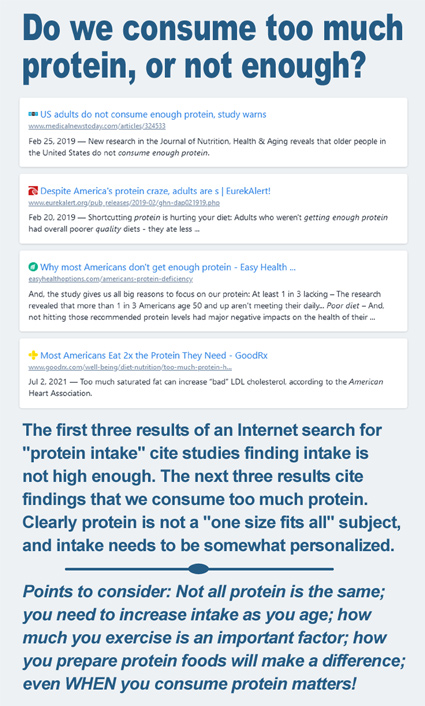In 1914, U.S. men were the third-tallest in the world. Only a couple of Scandinavian countries—where the Vikings used to reign—had men that were slightly taller. At the same time, U.S. women were ranked the fourth-tallest in the world.
A little more than a century later the global scaling surveys show a drastic change: U.S. men now rank only 37th in average height, while U.S. women have been reduced to 42nd place.
The findings are shocking for many Americans since the U.S. leads the world in so many other areas.
It should be noted that average heights have increased around the world, including in the U.S. These improvements have been attributed to less poverty and better nutrition in the latter part of the 20th century. However, the U.S. has failed to make the level of improvements seen in the rest of the world—drastically reducing its ranking.
Why does the U.S. not lead the world?
The causes of the reduced rankings have been hotly debated. One theory is that America’s wealth is actually a negative—it encourages the consumption of junk food instead of nutrient-rich staples. Other experts link growth reduction to the low testosterone problem plaguing western countries. Still others connect chemicals, environmental toxins and heavy pharmaceutical use as the cause. The U.S. does consume three-quarters of the world’s prescriptions, after all.
It may be that all of these factors play a part, but a new German study is pinpointing lack of protein as a major cause—at least for women.
Researchers at the University of Bonn found that while an increase in protein intake had no effect on the height of boys and young men, a correlation was found with the female test subjects. In fact, supplementing 7 grams of protein above the daily recommendation was able to produce one additional centimeter (.39 inches) in height for the average study participant.
The findings were published in the Journal of Clinical Endocrinology and Metabolism in July 2022.
In addition to carbs and fats, protein is one of the three macronutrients required for optimal health. Protein aids tissue growth and repair, and it supports immune health.
Lack of protein in developmental years will cause stunted growth, and lack of protein in old age accelerates muscle and bone decline.
Where rankings come from
According to a study by the Imperial College of London, the average height of American women is between 5-foot-1 and 5-foot-4.
This range—ranking the U.S. at 42nd worldwide—is still higher than approximately 100 other countries. (There are almost 200 countries in the world, but not all could be included due to difficulty in gathering data.)
The Imperial College of London used biometric data collected from 18-year olds around the world between 1914 and 2014.
The data showed that the tallest men in the world were Dutch, while the tallest women were Latvian.
Study details
To conduct the study the researchers at the University of Bonn recorded protein intake from dietary survey data and by measuring urinary urea nitrogen excretion in 189 healthy girls and boys.
First author Yifan Hua and Thomas Remer, PhD, evaluated dietary records, regular 24-hour urine collections and specific height measurements of children and adolescents from age three and onward.
“The study is the first to demonstrate the anabolic potency of the essential nutrient protein by examining detailed nutritional data over a period from age 3 to 17,” reported Remer.
In explaining why the same results weren’t found in the male test subjects, Dr. Hua added: “Apparently, for them, significantly stronger effects of sex hormones—including testosterone—on the growth hormone axis leave less room for an additional anabolic nutritional effect from protein.”
Fruits and vegetables still vital
As important as extra protein was found to be for young women, the researchers commented on the alkalizing effect of fruits and vegetables, and why the intake of these important foods should not be lowered.
“Our prospective, biomarker-confirmed findings on habitual protein intake during the pediatric period provide evidence that protein ingestion above dietary recommendation contributes to an enhanced adult height in girls. This enhancement, in turn, may be weakened by an insufficient alkalizing potential of fruit and vegetable-poor nutrition,” the authors wrote in the study summary.
Protein intake debate
The study is likely to add fuel to the debate over whether Americans consume too much, or not enough, protein.
A 2019 study published in the Journal of Nutrition, Health & Aging on 11,680 subjects shows that more than one in three adults over 50 are missing the mark on protein—with many not even getting half the protein they need.
This study, along with the new study correlating protein increase to greater height, it would appear extra protein is desperately needed in at least certain portions of the population.
A big advantage to adding a protein supplement to one’s diet is that a quality supplement will provide an high-quality protein. A second advantage is that in can be conveniently consumed when the body needs it most.
Protein-providing products from Optimal Health Systems include:
• Optimal Complete Nutrition Plus
• Optimal Collagen Plus
• Optimal Complete Performance-Vanilla
• Optimal Complete Performance-Chocolate
– – –
Article Sources: Journal of Clinical Endocrinology and Metabolism, Imperial College London, The journal of nutrition, health & aging.



